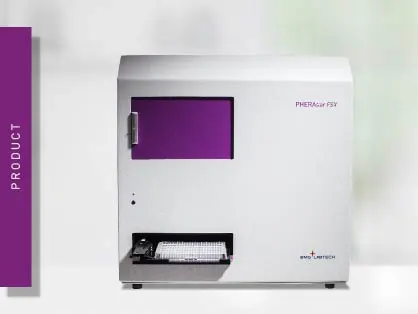
PHERAstar FSX
Powerful and most sensitive HTS plate reader
Luminescence assays come in many different types.
 Dr EJ Dell
Dr EJ Dell
Basically luminescence assays are a chemical or enzymatic reaction that uses a substrate. When the substrate is acted upon by the chemical or enzymatic reaction, light is given off as a by-product. The two main types of luminescence reactions are Flash and Glow. The Flash luminescence reaction occurs quickly, in a matter of seconds or minutes, giving off a very bright signal. Whereas Glow luminescence assays can last for hours but they are not as bright as Flash luminescence assays.
Both assay types can be measured with a luminescence microplate reader. However, for flash assays injectors are typically required because of the fast onset of the reaction.
An example of the Flash luminescence assay is DLR® from Promega:
An example of a Glow luminescence assays is the ADP-Glo® Kinase assay from Promega:
Powerful and most sensitive HTS plate reader
Most flexible Plate Reader for Assay Development
Upgradeable single and multi-mode microplate reader series
Flexible microplate reader with simplified workflows
The Z prime value (Z’) is a statistical parameter that can provide practicable information on the quality of an assay. This blog looks at its usage and describes some examples of specific applications.
Optical density and absorbance measurements are widely used in the life sciences. This blog looks at practical applications and some of the fundamentals.
Researchers have different technology options available for absorbance measurements. This blog compares spectrometers and monochromators. What’s the difference?
ELISAs are a popular tool to detect or measure biological molecules in the life sciences. Find out how microplate readers can be used to advance research using immunoassays.
LanthaScreen is a TR-FRET technology which can be used to measure kinase activity, compound binding, and post-translation modification events. Read more about this type of assay here.
Although the concept of fluorescence gain has always been hard to grasp, it is a make-or-break parameter in microplate reading. Read here how to adjust it optimally.